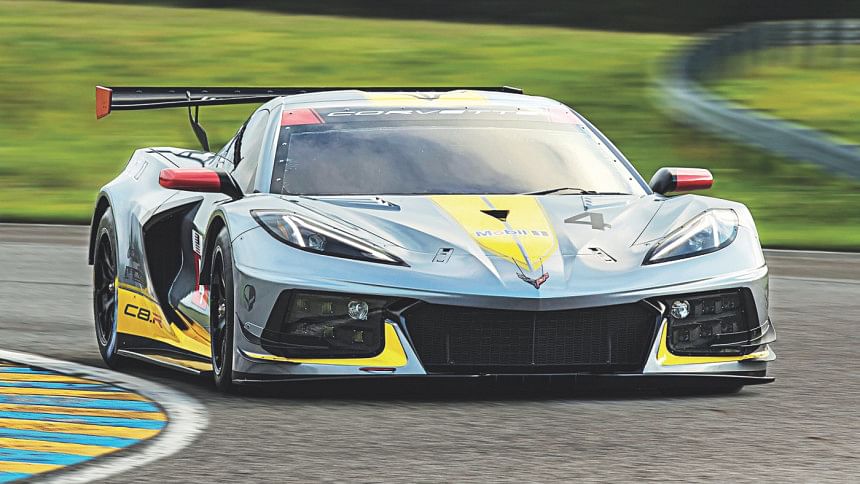Chevrolet Corvette C8R – channeling the successes of past Vette racers

Chevrolet just released the C8R Corvette, which is the race car version of the road going car. But before we get to that, I think it is important to put into context how much weight the Corvette nameplate holds and how much the C8R has to live up to. The Corvette moniker has been around for 66 years now, and has stood alone as America's only true sports car in a sea of muscle cars. Sure, there were other powerful cars made by other American manufacturers, but none really fit the sports car category like the Corvette did. That means it carries a lot of heritage in American history, and has been representing a large part of America's racing prowess in both national and international settings over the nameplate's long history.
The Corvette's racing history has been rich for almost as long as they have been around. After the initial "failure" where Chevrolet developed a car that looked good but was not exactly the best in the driving and handling departments due to liberal raiding of parts bins, Chevy later paired the chassis with a proper V8. The result was success in racing and selling them to the point we know today. The Corvette name got its first taste of LeMans victory in 1960 with the C1, and later generators saw the development of some splendid track cars, notably the C3, which dominated track racing.
However, the true modern era of racing Corvettes started in 1999 with the debut of the Corvette Racing Team, a joint venture between Chevrolet and Pratt and Miller Engineering. The Corvette Racing venture managed to win over 100 victories all around the world in different races such as the Rolex Daytona 24, 12 Hours of Sebring and a whopping eight wins at the 24 Hours of LeMans, arguably the most prestigious racing event of them all. Here's a roundup of the best of modern racing Vettes:
C5R
The first Corvette that Chevy decided to officially race, 45 years after its initial inception. It raced and dominated different race tracks for most of the early 2000s.
C6R
From 2005 to 2013, the C6R raced in GT1 class, where its 7 litre LS7.R engine won the Global motorsports engine award. In GT2 class, the LS7.R got downsized versions due to regulations.
C7R
Developed alongside the C6R, it was indeed a worthy successor to the legends that came before it.
It followed the same philosophy, albeit with the help of modern technologies such as direct injection engines. The C7R secured its first LeMans win in 2015, along with several endurance racing championships throughout its production period.
Now coming to the C8R
The C8R Corvette swears in the face of tradition and brings forth immense development in the Corvette Racing principles. The front engine, rear wheel drive layout is no more and long gone are the days of pushrod V8s, replaced by a mid-engine layout and a flat-plane V8 with dual overhead cam technology and direct injection. To put the V8 into context alongside the cross plane V8s of old, flat plane cranks are mostly used by a certain Italian manufacturer with a prancing horse as its logo. The engine is mated to a 6 speed sequential gearbox, and has been reported to make 500 HP and 480 lb-ft of torque from 5.5 liters of displacement. Rumor has it, this engine might find its way into a road going version, albeit in a much more powerful guise as road cars do not have strict power limits. From the looks of it, it looks like the car barely shares any major panels with the road going version, but Chevrolet is yet to make a statement on how much has been carried over from the road car.
The new Corvette has a lot to live up to, and everything that we have seen till date suggests that other manufacturers in endurance racing are about to face stiff competition from the Americans. We're glad Chevrolet is carrying on the tradition of racing Vettes at a time when most manufacturers would rather make SUVs and people movers.

 For all latest news, follow The Daily Star's Google News channel.
For all latest news, follow The Daily Star's Google News channel. 



Comments